The Australian Plants Society has many excellent photographers and now members can use their skills in a citizen science project that aims to record and identify Sun-loving Moths and their association with Australian plants in the Rutaceae family.
Wendy Grimm from North Shore Group has been part of the group since 2014 and it has opened her eyes to just how many tiny moths make use of the flowers of Boronia and related plants. She thoroughly recommends this project to photographers as it adds another level of interest and understanding to the preservation and study of this group of plants.
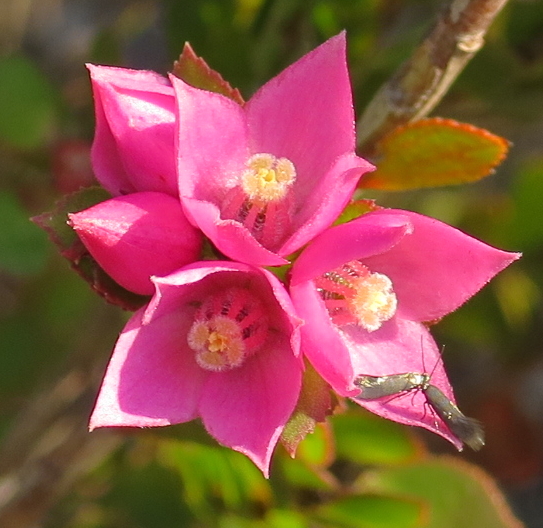
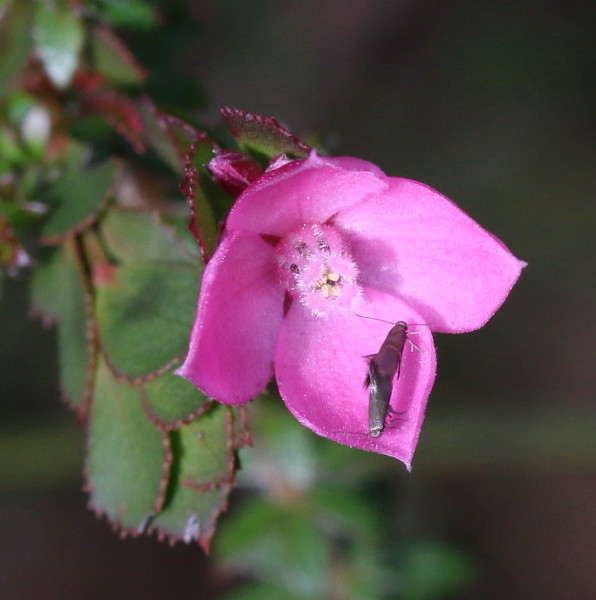
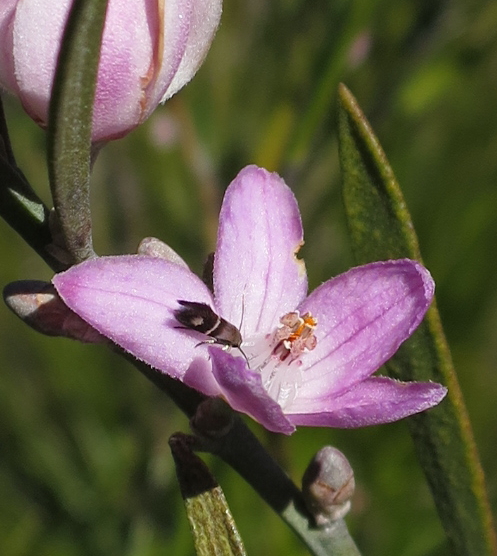
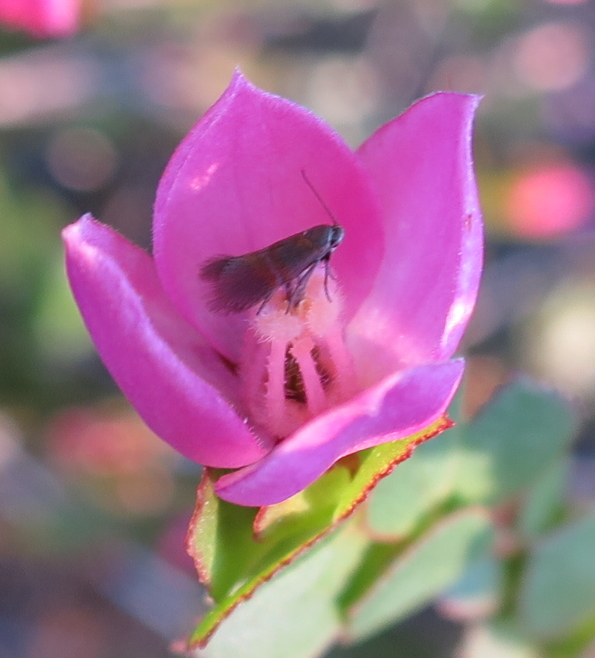
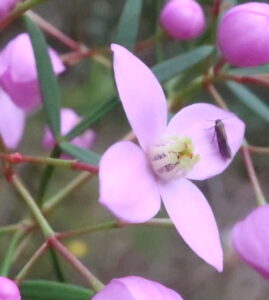
Join the project – take a photograph
Project leader Doug Hilton has provided this information.
Not all moths are nocturnal, brown and dusty and send shivers down the spine. As the photo below of an undescribed moth on Boronia coerulescens from Kalbarri National Park in WA (credit Andy Young) shows, some are beautiful, metallic and dance in the sun. We are a passionate group of amateur entomologists and over the last ten years of family holidays, weekends and extended highly-focused field trips have discovered that one family of tiny moths, called Heliozelidae (aka Sun-loving Moths), is unexpectedly and incredibly diverse in Australia – think tiny insect equivalents of lemurs in Madagascar or Birds of Paradise in Papua New Guinea.
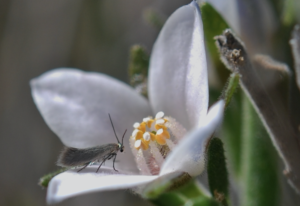
We have found that almost every Australian species of the citrus family (Rutaceae) we have looked at, from the top of Cradle Mountain in Tasmania, to the desert around Kalgoorlie in Western Australia and to the tropical north of Kakadu in the Northern Territory, are associated with one, two and sometimes more species of Sun-loving Moths.
The biology of many Sun-loving Moths is inextricably linked to the biology of the citrus plants. Female moths lay their eggs into flowers, and when they hatch, caterpillars eat the developing seeds. Because the caterpillars are only able to eat seeds of one species of plant – their survival is absolutely dependent on the plant’s survival. In some cases, the relationship is even more intimate, with not just the plant providing the caterpillars’ food, but also the female moth contributing to pollinating the plant’s flowers. In a few cases the moths are the plant’s only pollinator. Conservation of moths and plants are therefore inextricably inter-twined, and this becomes incredibly important when plants are range-restricted or endangered – as many are.
To date we have only looked at the tip of the iceberg. Despite only examining about 50 of the nearly 500 Australian citrus species, in genera like Boronia, Phebalium, Eriostemon and Zieria, we have discovered over 100 new species of moths and are in the process of describing and naming them. We would like to look at every single species of Rutaceae and identify moths with which they are associated and … we are in a hurry because an increasing number of these plants are endangered (e.g. Boronia clavata in WA and Boronia granitica in NSW/QLD) and their Sun-loving Moths may go extinct before they are even known. The only way to do this is with your help, and a great first step is by photographing moths on Rutaceae plants.
Even without trying, new species of moths have been discovered and photographed incidentally by plant lovers who have posted their beautiful photos on social media platforms like Instagram. We can’t wait for chance sightings – we need a more deliberate and concerted effort. Anyone who has species of Rutaceae growing in their local area, we would like to enlist you in our project. First, please search for these plants! Then please look carefully at their flowers (from the time they are unopened buds through to after they drop seed) and if you see a moth, please, please, please take a photograph, if possible, note the GPS co-ordinates and let us know. If you can also provide details like the time of day and the date the photo was taken, a plant ID and stage of flowering – all the better.
In fact, even if you don’t hit the jackpot and find moths, photos and locations of plants are also valuable! We can then follow up your discoveries and search for them on our next field trip in that area. And if you don’t find a moth on your first look – don’t give up! In many cases moths may be present only for a few days or a week in a year and only on a few plants among a whole patch of similar plants – and that’s why a few people can never cover the whole country. That’s why we need people in every state and in every region. That’s why we need you!
Where to post your photos
Post your photos on your own Instagram Account and please include us @sun.loving.moths in your post and please use the hashtags #sunlovingmoths #australiancitrus #rutaceae #heliozelidae
We will repost pictures (with credit of course) so everyone can share in the discovery.
Or
Share your photos on your own Facebook Account but please remember to tag us too Sun Loving Moths.
Or
Email us your photos at Sun.Loving.Moths@gmail.com
The current Sun-loving Moth Gang are: Doug Hilton, Axel Kallies, Andy Young, Mike Halsey, Liz Milla, Wendy Grimm, Mally Walter and Don Sands – with lots and lots of generous help from many other people.
